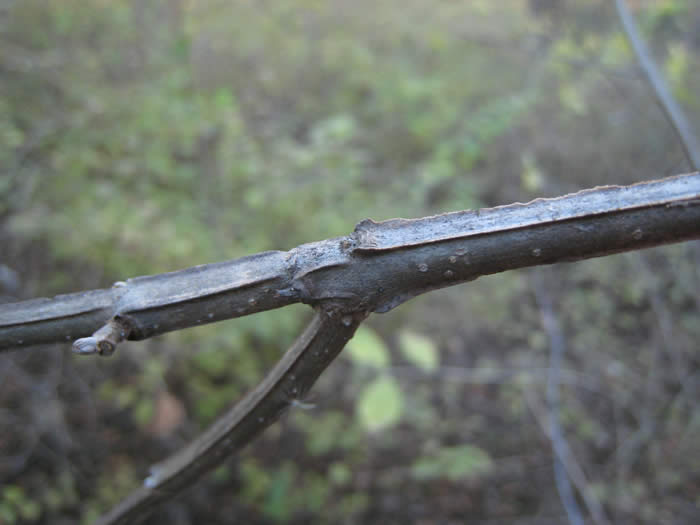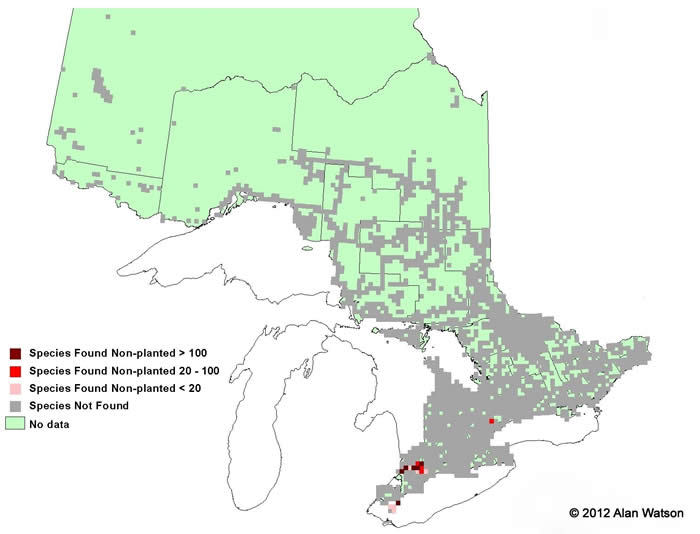blue ash
blue ash / Fraxinus quadrangulata
Blue ash is often the easiest ash species to identify. The distinct 4 sides or ridges to blue ash twigs distinguish it from its native Ontario relatives, and lend the blue ash its Latin specification, quadrangulata, meaning four-angled. The blue ash is in decline in Ontario, due to over-harvesting, loss of habitat, and possibly over-predation. Blue ash has been given the COSEWIC classification of Special Concern in Ontario and across Canada. The bark of blue ash produces a blue dye when boiled, and the sap turns blue when exposed to air. This fast-growing ash can live to about 150 years, but requires open, sandy beaches or limestone plains.

Buds of the blue ash are hairy and scaled. They measure 6-8 mm and are usually brown coloured. Photo by Sean Fox.

Like all ashes, blue ash leaves are compound and opposite. Blue ash leaflets usually occur in groups of 5-11. Photo by Sean Fox.

Note the distinct “four-angled” sides of the blue ash twig – this characteristic readily identifies this species in the field. Photo by Sean Fox.

The bark of the blue ash is also distinctive, becoming scaled and loose with maturity. Photo by Sean Fox.

Ontario Tree Atlas map of non-planted Blue Ash. 1995-1999.
References
Farrar, J.L.. 1995. Trees in Canada. Fitzhenry & Whiteside Ltd. Toronto. ON. 504 pp.
Kershaw, L. 2001. Trees in Ontario: Including tall shrubs. Lone Pine Publishing. Edmonton. AB. 240 pp
Muma, W. 2011. Ontario Trees and Shrubs. [Online] Available: www.ontariotrees.com
OMNR, 2011. Ontario Ministry of Natural Resources: Ontario Tree Atlas. [Online] Available: http://www.mnr.gov.on.ca/en/Business/ClimateChange/2ColumnSubPage/267027.html
OMNR, 2008. Ontario’s Biodiversity: Species at Risk.